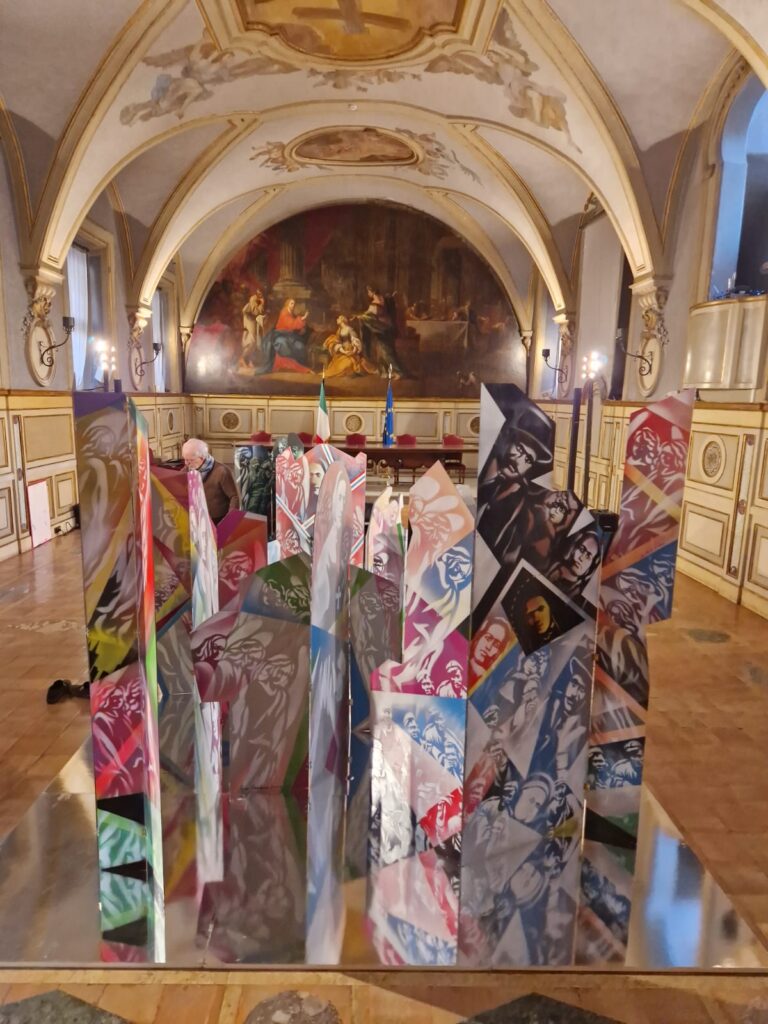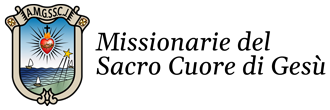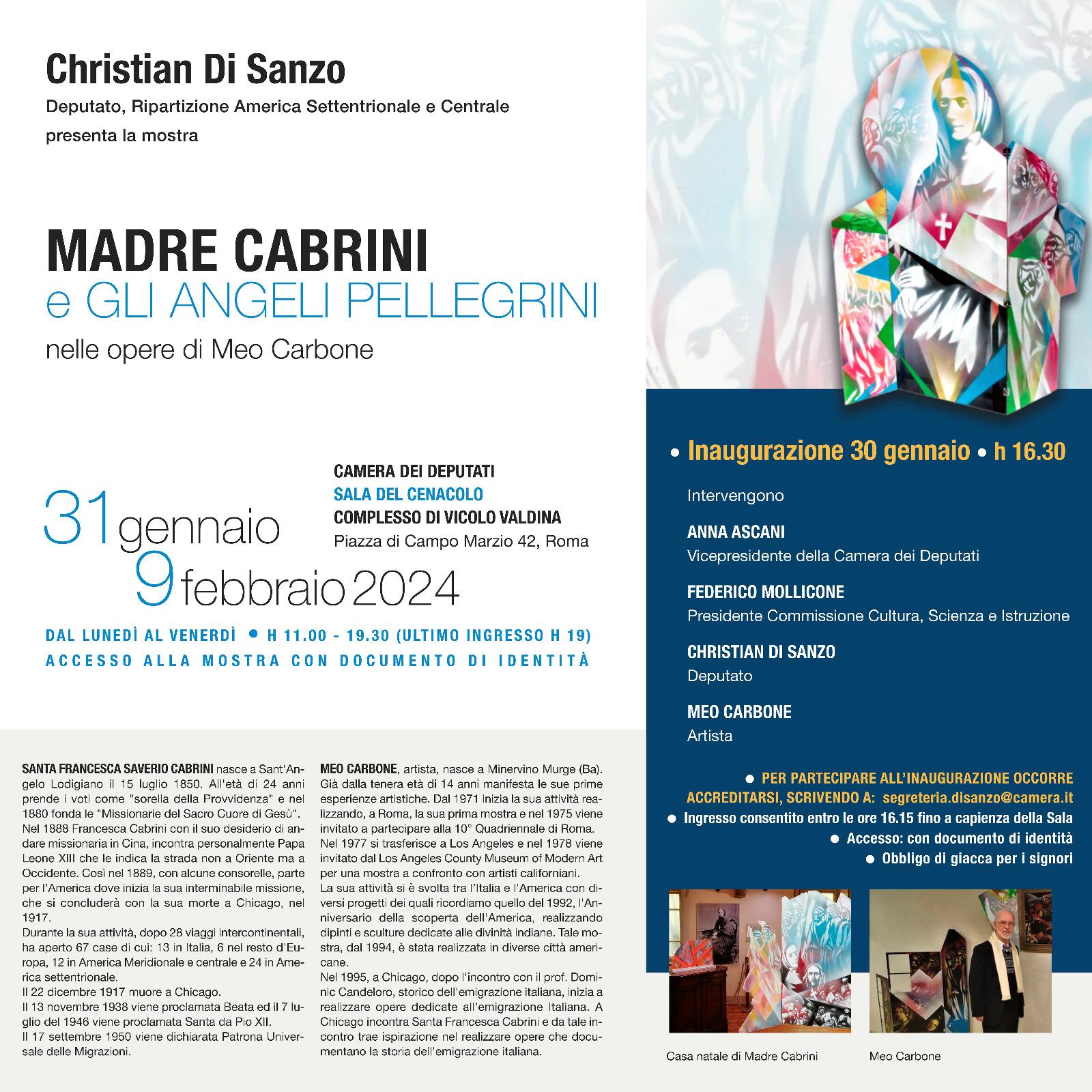Tuesday, January 30, at 4:30 p.m., at the Cenacolo Hall of the Vicolo Valdina Complex is the opening of the exhibition “Mother Cabrini and the Pilgrim Angels,” in the works of Meo Carbone. Speakers include Anna Ascani, vice president of the Chamber, Federico Mollicone, chairman of the Culture Commission, Congressman Christian Di Sanzo, and artist Meo Carbone.
The exhibition is open to the public Monday through Friday from 11 a.m. to 7:30 p.m. – last entrance 7 p.m., entrance from Piazza di Campo Marzio 42.
We share with you the link to the live broadcast of the opening of the Mother Cabrini exhibition to be held this afternoon at 4:15 p.m. Italian time, in case you would like to connect.
The ‘display in the center of the Cenacle Hall at the Vicolo Valdina Complex is interesting.
The panels are displayed following their three-dimensionality and creating a beautiful movement, thus recalling the groups of migrants to whom Mother Cabrini lent her help.
At left is a panel with Meo Carbone’s career and a brief explanation of how the idea for the exhibition came about. At the back of the room, on the other hand, a video gives us a better insight into the figure of Mother Cabrini.
https://comunicazione.camera.it/archivio-prima-pagina/19-37172

Meo Carbone says the focus of this exhibition entitled “Mother Cabrini and the pilgrim angels” is the bag that accompanied Mother Cabrini in all her travels. Cabrini had great sensitivity to others. The Pope several times recalled Mother Cabrini and for this we feel we have the Saint’s protection. In 1950, the artist later recalls, the saint became patroness of migrants. After all, he adds, ” Every man is an emigrant.” His knowledge of Mother Cabrini began when in his youth he lived near the Church of the Redeemer on via Sicilia in Rome, a church that Mother Cabrini herself had built. Carbone emphasizes how talking about Italian emigration is about always having our country’s history ahead. He also tells the artist how 30 years ago when he lived in Chicago at a time when he was passionate about Indian deities he also discovered there was an exhibition on the history of Italian emigrants. In San Benedetto del Tronto in 1946 he then began his activity. In the early phase of his artistic career related to Mother Cabrini, his paintings had a dark tone. The artist wanted to express a sense of suffering through dark colors. He then became involved in organizing exhibitions on Italian emigration. He did an exhibition at the Vittoriano Palace titled “The dream,” then in 2017 when the centenary of Mother Cabrini’s death occurred, several events were organized in Milan, Rome and Genoa. At the end of his speech Meo Carbone recalling the value of the figure of Mother Cabrini as the patron saint of migrants, an exhibition that serves not to forget our past and to educate others to be human.


Mother Cabrini work is eternal in her sister who follow her Charism I am glad to these sisters May God bless them to spread His Kingdom blessings from the the Most Blessed Trinity